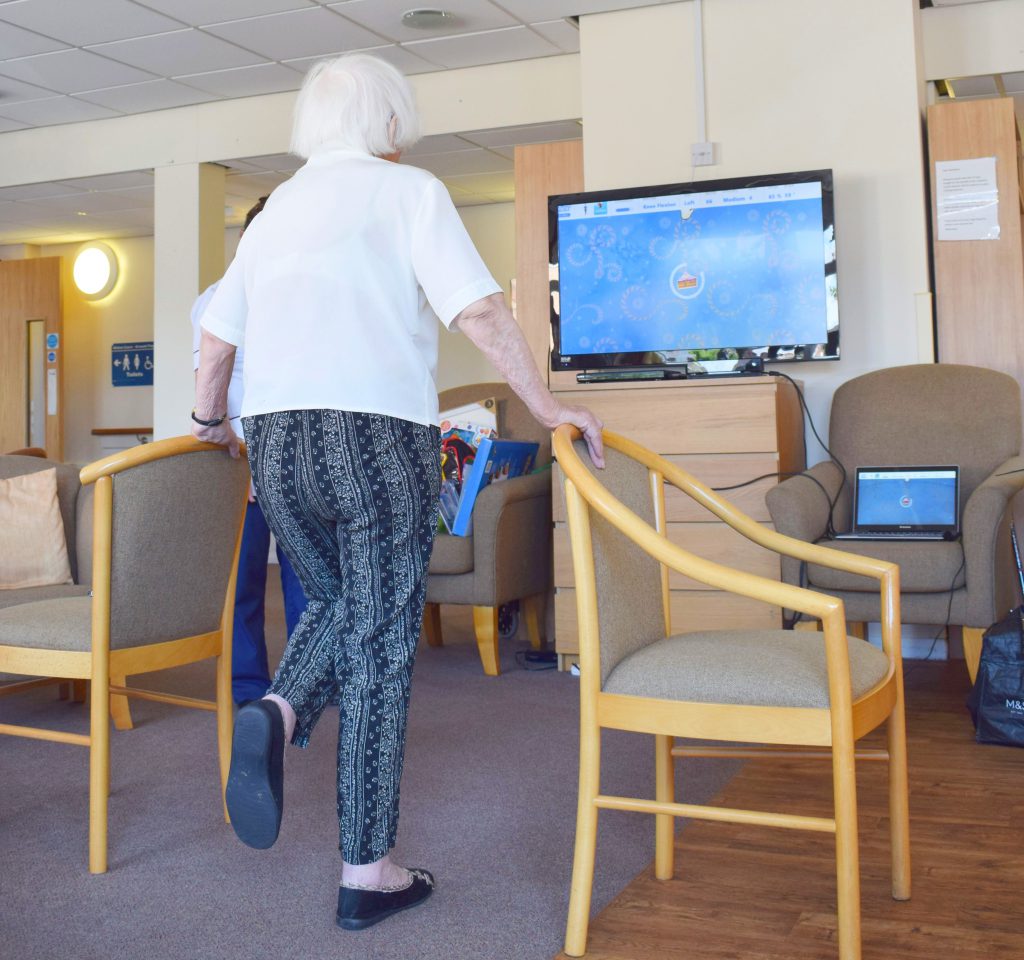By Wytske M.A. MEEKES and Emma STANMORE, The School of Nursing, Midwifery and Social Work, University of Manchester, Manchester, UK; Email: wytske.meekes@manchester.ac.uk;
This study is published in the (2016) Proceedings of the Second West Midlands Health Informatics Network Conference (WIN 2016). Digital Health, 2 . pp. 11-13. ISSN 2055-2076.
This study investigated the factors that influenced the motivation of older people at risk of falls, to use falls prevention exergames to improve their physical function and reduce their fall risk. A mixed methods study was conducted in which 12 older people aged between 59 to 91 years participated. The results suggest that the older people are intrinsically and extrinsically motivated which indicates that exergames are a promising tool for fall prevention. Below we present the summarised findings of the study.
Introduction
The proportion of older people is increasing worldwide [1,2]. In the UK, the proportion of older people is even higher compared to the average worldwide. [3] Older people are at increased risk of falls due to factors such as reduced physical strength, balance and the use of certain medications or large numbers of medications. [4]
One in three people aged 65 years and older fall each year in the UK. [3] The consequences of a fall can vary; from a bruise or sprain to a traumatic brain injury or hip fracture. These consequences are related to decreased health and psychological well-being, and increased expenditure in the health care sector.[5,6,7] The consequences of a fall can also cause death, with approximately 3,653 older people dying due to a fall in the UK in 2013.[3] One of the best modifiable risk factors to reduce the fall risk among older people is physical exercise.[8,9,10]
To improve physical function and reduce fall risk, MIRA Rehab with the University of Manchester and users (older people and falls prevention therapists) has developed falls prevention exergames with and for older people that keep track of the client’s performances e.g. speed, scores and number of games played.[11] and are based on the FaME and Otago exercise programs which are shown to reduce the risk of falling among older people.[12,13,14]
The objective of this study is to investigate which factors influence the motivation of older people, who recover from a fall or who have a high risk of falling, to use falls prevention exergames to improve their physical function and reduce fall risk.
Methods
Twelve older people, aged 59 to 91 years from two supportive housing facilities in North West of the UK, one physiotherapist and one warden (manager) participated in the study (see Table 1 from the original paper). The exergames were set up in a communal room in the two supportive housing facilities where the participants live. At one housing facility, the exergames were offered three times a week for 12 weeks and at the other housing facility, three times a week for six weeks. This is a mixed method study in which interviews, Technology Acceptance Model questionnaires and 81 hours of observation of the participants using the exergames were conducted. The interviews were transcribed and concurrently analysed using constant comparative analysis.
Results
The findings of this study show that the participants are intrinsically and extrinsically motivated. They are intrinsically motivated because they enjoy playing the exergames and the use of the exergames appears to increase their physical, mental and social confidence.
In addition, the social interaction which was provided in this study was an important extrinsic motivator which increased the intrinsic motivation to adhere to the falls prevention exergames. The participants are extrinsically motivated mainly because they have certain goals or outcomes which are important for them to reach: improving their physical function; improving their scores; and keeping their memory active. Also, it appears that the participants have a fear of ageing and the consequences of ageing. Fear is an intrinsic feeling caused by an extrinsic factor, which is ageing and the related consequences of ageing.
Conclusion
Falls prevention exergames are a promising tool for fall prevention because the findings of this study show that older people can be intrinsically and extrinsically motivated to use the exergames for a longer period of time.
Recommendations
The social setting appeared to be an important factor for the intrinsic motivation of enjoyment. Therefore it is recommended to incorporate social interaction with the exergames, for example during coffee breaks in a lounge of a supportive housing facility.
To read the entire study please go to http://wrap.warwick.ac.uk/85306/
References
- United Nations (UN). World population ageing 2013, Economic & Social affairs, http://www.un.org/en/development/desa/population/publications/pdf/ageing/WorldPopulationAgeing2013.pdf (2013, accessed 5 November 2014).
- World Health Organization (WHO). Aging, http://www.who.int/topics/ageing/en/ (2002, accessed 30 October 2014).
- AgeUK (2015). Later Life in the United Kingdom, http://www.ageuk.org.uk/Documents/EN-GB/Factsheets/Later_Life_UK_factsheet.pdf?dtrk¼true (2015, accessed 25 March 2015).
- Rubenstein LZ. Falls in older people: epidemiology, risk factors and strategies for prevention. Age and ageing 2006; 35(suppl 2): ii37_ii41.
- Den Hertog P, Stam C, Valkenberg H, et al. Letsel in Nederland. Letsels en letselpreventie, 2013.
- Glerum E. Wat is vallen, en wat zijn de oorzaken en gevolgen? Regionaal Kompas Volksgezondheid, http://www.regionaalkompas.nl/zuid-holland-west/thema-s/vallen-ouderen/wat-is-vallen-en-wat-zijn-de-oorzaken-engevolgen/. (2013, accessed March 10 2015).
- World Health Organization and Ageing, & Life Course Unit. WHO global report on falls prevention in older age. World Health Organization, 2008.
- Geraets JJXR, Calders P, Nijs J, et al. Oefentherapie. In: Jaarboek Fysiotherapie Kinesitherapie 2015. Bohn Stafleu van Loghum, 2014, pp. 107_109.
- Gillespie LD, Robertson MC, Gillespie WJ, et al. Interventions for preventing falls in older people living in the community. Cochrane Database Syst Rev 2012; 9(11).
- Karlsson MK, Vonschewelov T, Karlsson C, et al. Prevention of falls in the elderly: a review. Scandinavian journal of public health 2013; 41(5): 442_454.
- Mira Rehab. Product, http://www.mirarehab.com/. (2014 accessed 26 February 2015).
- Ca˘ lin A, Stanmore E. Exergames, how to make physiotherapy fun, http://www.software.ac.uk/blog/2015-02-12-exergames-how-make-physiotherapy-fun (2015, accessed 23 March 2015).
- Skelton D, Dinan S, Campbell M, et al. Tailored group exercise (Falls Management Exercise—FaME) reduces falls in community-dwelling older frequent fallers (an RCT). Age and Ageing 2005; 34(6): 636_639.
- Thomas S, Mackintosh S and Halbert J. Does the ‘Otago exercise programme’reduce mortality and falls in older adults?: a systematic review and meta-analysis. Age and ageing 2010; afq102.
- Johnson RB and Onwuegbuzie AJ. Mixed methods research: A research paradigm whose time has come. Educational researcher 2004; 33(7): 14_26.


